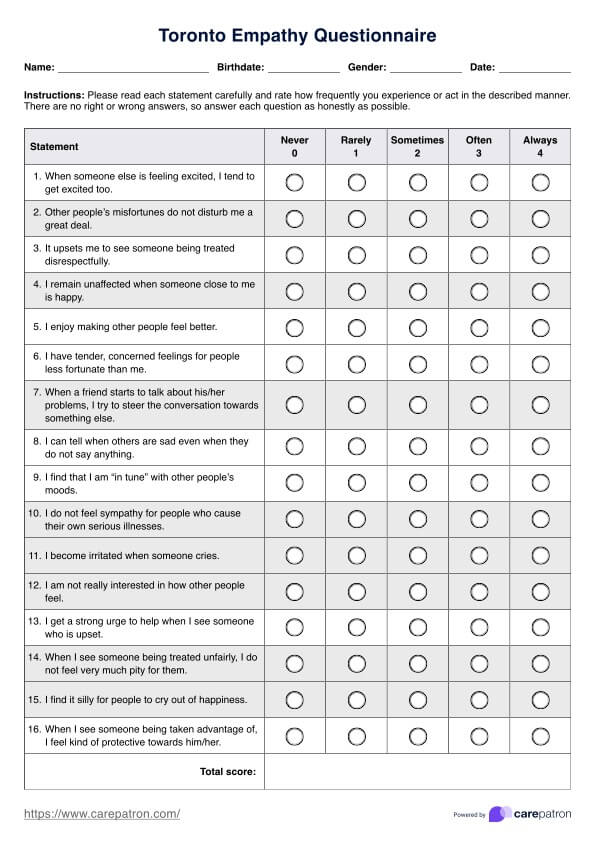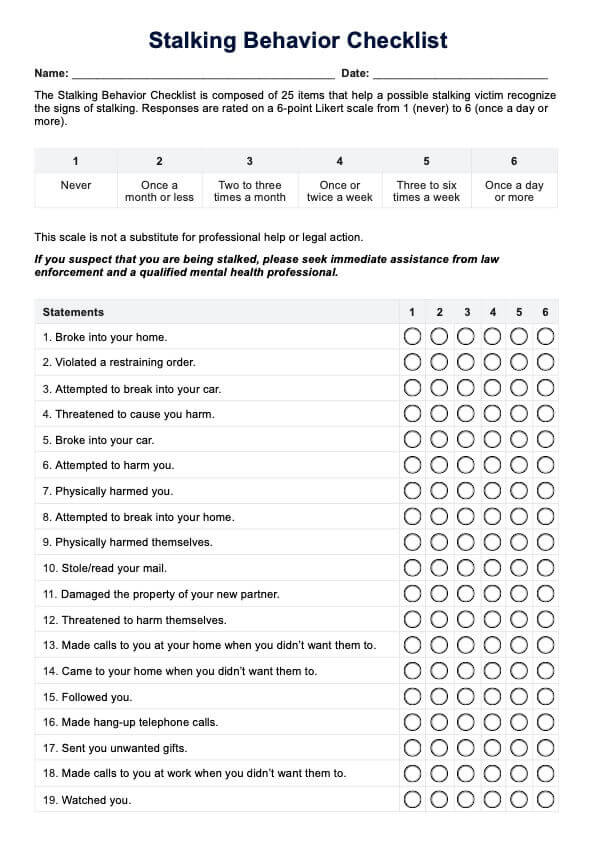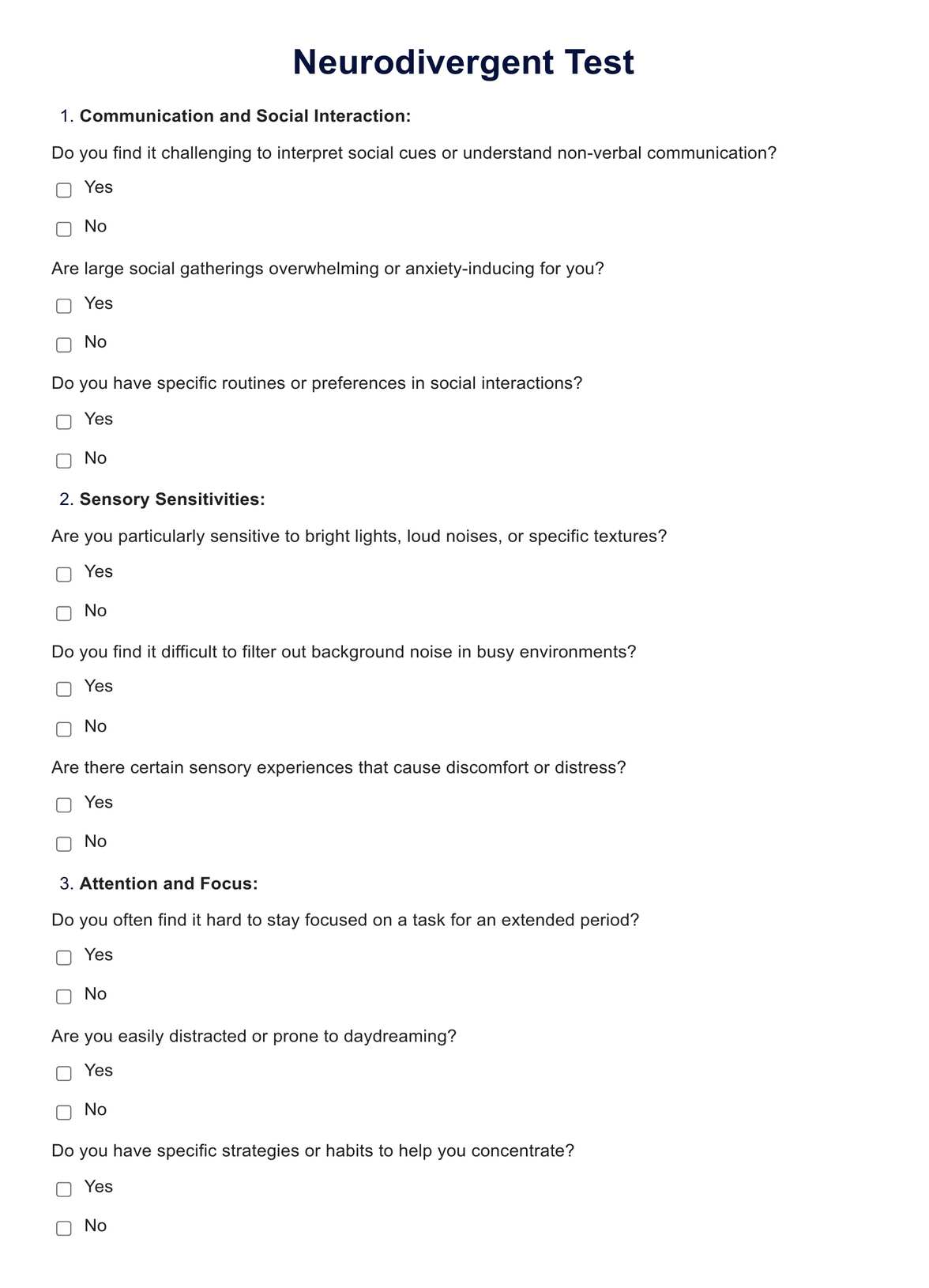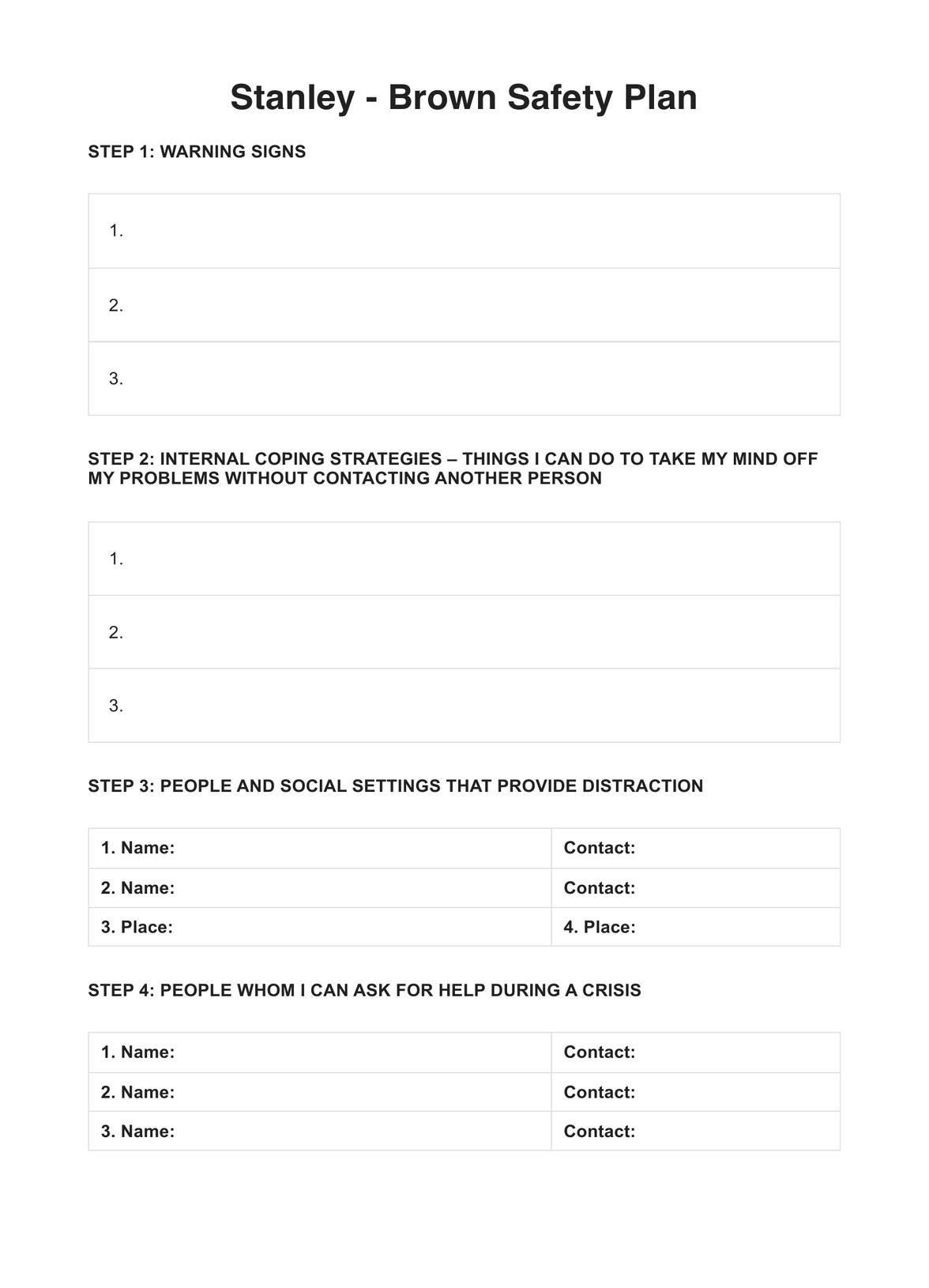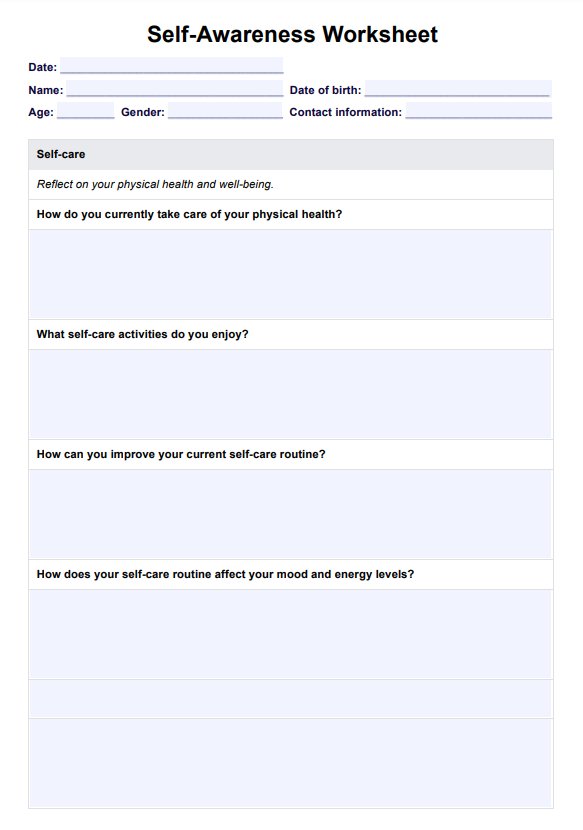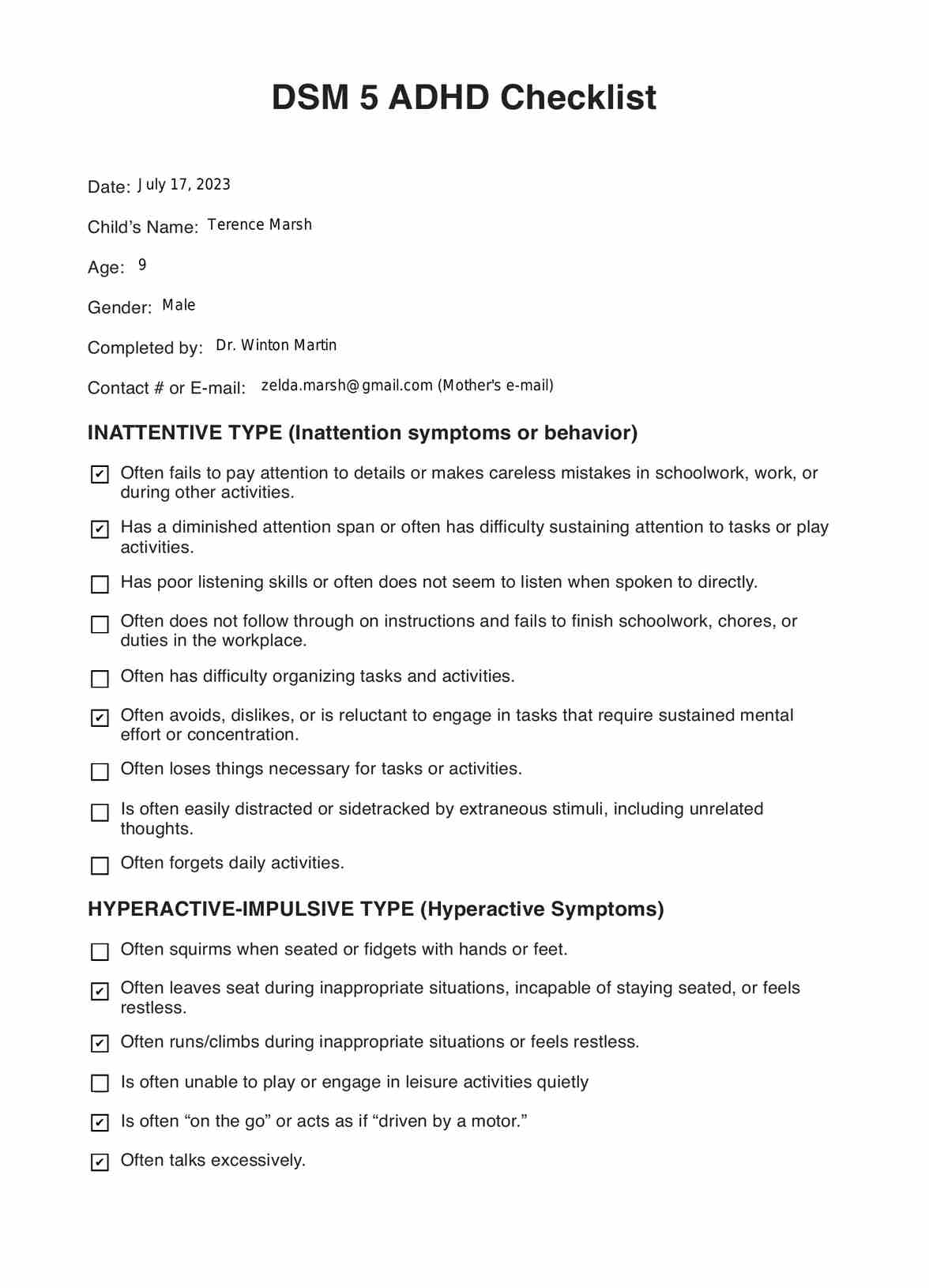Drop Arm Test
Discover the Drop Arm Test and how you can use it to assess shoulder instability. Download our free PDF guide and example now!


What is a Drop Arm Test?
The rotator cuff is a group of four muscles and tendons around the shoulder joint that provide stability, allowing for smooth and pain-free movement. It is incredibly important in everyday activities like reaching, lifting, pushing, and throwing.
Without healthy rotator cuffs, people can experience extreme pain and difficulty doing basic activities. Unfortunately, rotator cuff injuries are relatively common, especially among those who repeatedly perform overhead motions, like athletes and construction workers.
Healthcare professionals often use a to assess the stability of the rotator cuff and test for potential injury. This simple physical exam involves having the patient raise their arm and see if they can lower it without support.
The Drop Arm Test requires the patient to raise their arm to 90 degrees and slowly lower it. The clinician will observe if the patient has difficulty lowering the arm, which could indicate rotator cuff injury. A positive result is when the patient's arm drops to less than 90 degrees or they cannot lower it.
Drop Arm Test Template
Drop Arm Test Example
How does this printable Drop Arm Test work?
Our free printable Drop Arm Test guide includes an explanation and thorough instructions for performing the test. Follow these steps to get started:
Step One: Access the free template
Use the link on this page to download our free Drop Arm Test worksheet. You can also access it using the Carepatron app or the resources library.
Step Two: Discuss the test with your patient
Explain the Drop Arm Test to the patient and explain why you are performing it. Ensure they understand that discomfort may be felt during the test, but it should not be too painful.
Step Three: Administer the exam
Ask the patient to raise their arm to 90 degrees. Have them slowly lower it and observe how far they can bring down the arm without support. If the arm drops to less than 90 degrees or cannot be lowered at all, this is considered a positive result.
Step Four: Document and interpret the results
Write down the results in the provided worksheet. If a positive result is found, further evaluation may be needed to diagnose rotator cuff injury.
Drop Arm Test Interpretation
This simple physical exam can be used to assess shoulder instability and identify any potential rotator cuff injury. A positive Drop Arm Test result could indicate a tear or strain in the rotator cuff, and further evaluation may be needed. Ultimately, this test should NOT be used to diagnose any injury or condition, as it is only a simple and initial assessment.
When to use these Arm Drop tests?
The Drop Arm Test is typically used when clinicians assess a patient for rotator cuff injury or instability. It can also be used to:
Track and monitor the healing process for rotator cuff injury
The Drop Arm test can assess shoulder stability and observe the healing process after a rotator cuff injury. This can be done by performing the test regularly and noting changes throughout your patient’s treatment journey.
Measure improvement or worsening of injury symptoms
The Drop Arm Test can track the progression of rotator cuff injury and compare results over time. It can help you monitor any improvement or worsening of symptoms.
Compare the strength, stability, and range of motion of both arms
By administering this assessment, you can compare both arms' strength, stability, and range of motion. It can help you determine if an imbalance exists, which can indicate rotator cuff injury.
Assess shoulder flexibility or tightness
The shoulders are one of the most flexible parts of the body, and maintaining flexibility is important for overall mobility and healthy joints. Using the exam, you can evaluate your patient’s shoulder flexibility or tightness and take the necessary steps to improve it.
Who is this Drop Arm Test PDF for?
Our printable Drop Arm Test PDF is designed for use by physical therapists and other healthcare professionals. It can also be used by:
- Occupational therapists
- Sports coaches and trainers
- Exercise physiologists
- Athletic therapists
- Physiotherapists
- Chiropractors
- Orthopedic surgeons
- Sports medicine professionals
- Fitness instructors
- Rehabilitation specialists
This assessment tool can also be used in various settings such as clinics, hospitals, physical therapy centers, and home-based care.
.png)
Benefits of these free Drop Arm Test Templates
The Drop Arm Test can help you assess and track shoulder stability, range of motion, and flexibility. It also comes with other benefits, including the following:
It's time-saving
This assessment is a fast and efficient way of evaluating shoulder stability. It can be completed within a few minutes, making it ideal for busy clinics and rehabilitation centers.
It can help you track the healing process
Regularly performing the Drop Arm Test can help you monitor the healing process for rotator cuff injury. This can also be used to compare results to track improvements or issues that need to be further addressed.
It helps patients understand their condition
This assessment tool can help your patients better understand and visualize their shoulder condition. This can help them set realistic expectations and adhere to their treatment plan.
It gives you an objective measure of shoulder flexibility
The Drop Arm Test provides an objective measure of shoulder flexibility, allowing you to accurately evaluate any tightness or other issues. This can help you identify any underlying problems and make the necessary corrections.
Commonly asked questions
To administer the test, ask the patient to raise their affected arm and hold it at a 90-degree angle. Tell them to slowly lower their arm as far as possible and hold for at least 5 seconds. Check for any pain or discomfort during the test and visible signs of shoulder instability.
The Drop Arm Test evaluates shoulder stability, range of motion, and flexibility. After performing the test, you can compare the results from both arms to determine if an imbalance exists. If there is a difference in strength, stability, or range of motion between the two arms, this could be an indication of rotator cuff injury.
The Drop Arm Test is a fast and efficient way of evaluating shoulder stability and flexibility. It can help you assess the range of motion, identify imbalances between the two arms, and monitor the healing progress for rotator cuff injury.


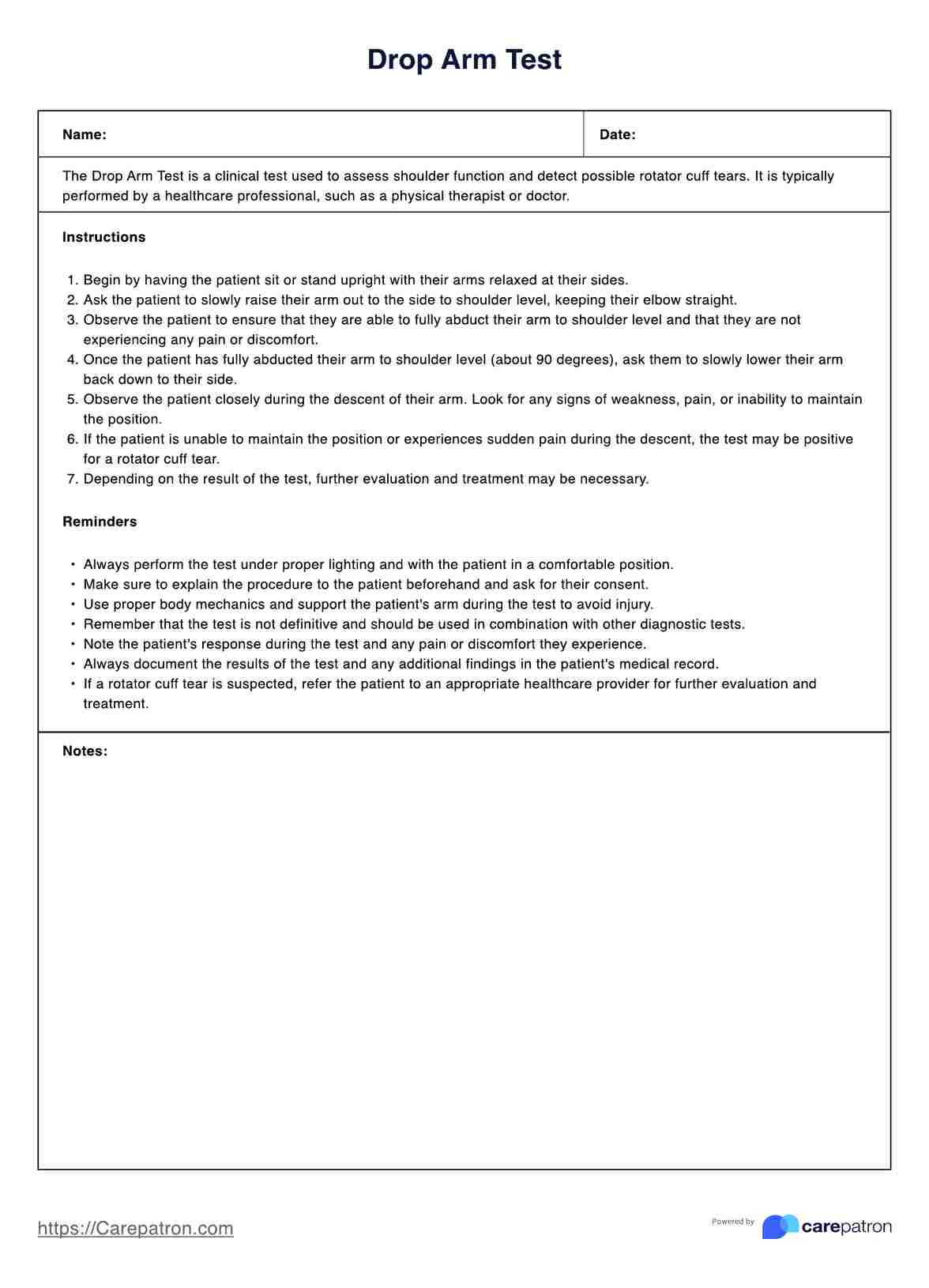
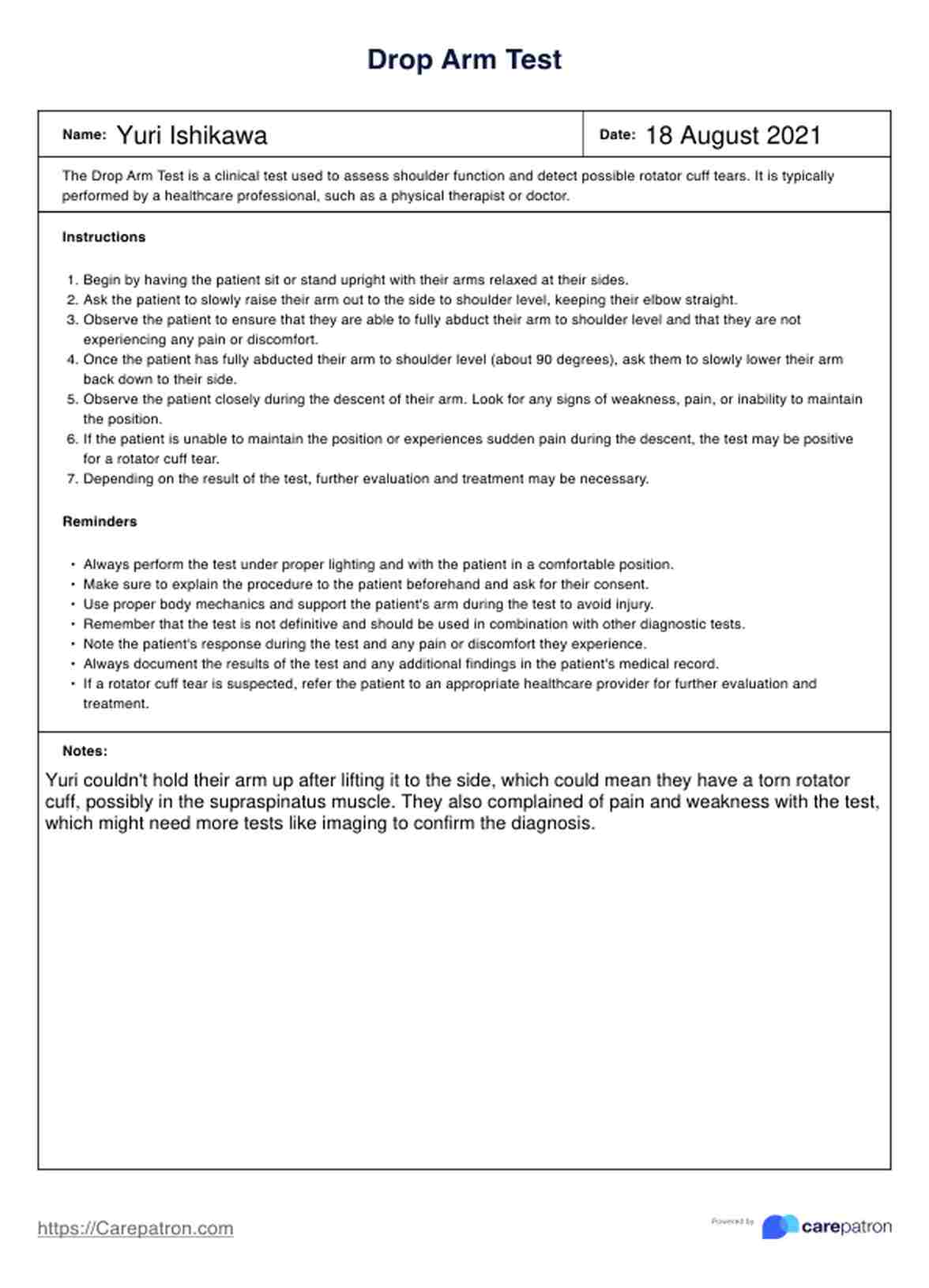













-template.jpg)




















































































